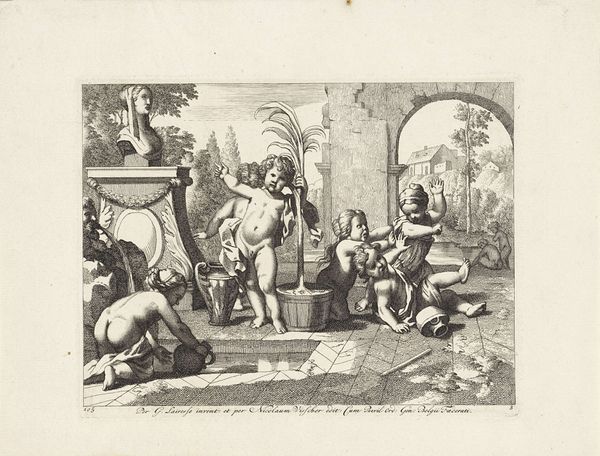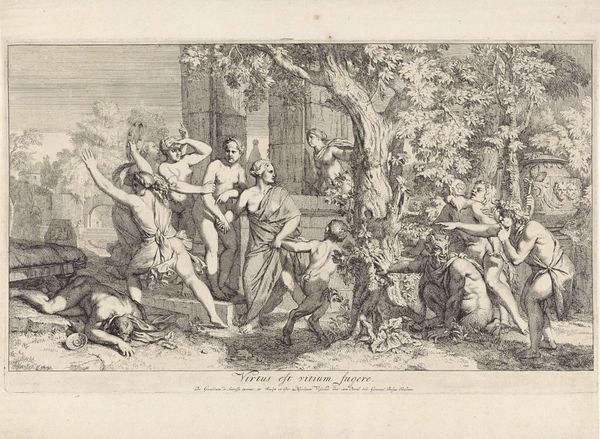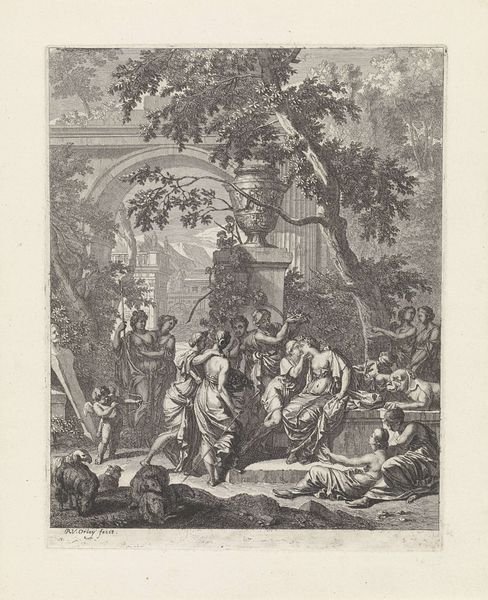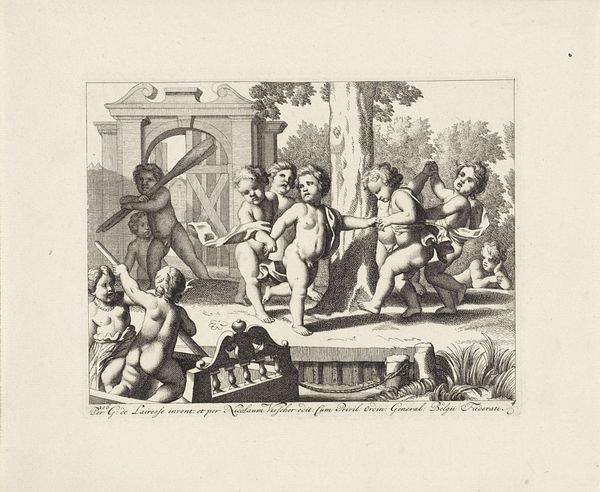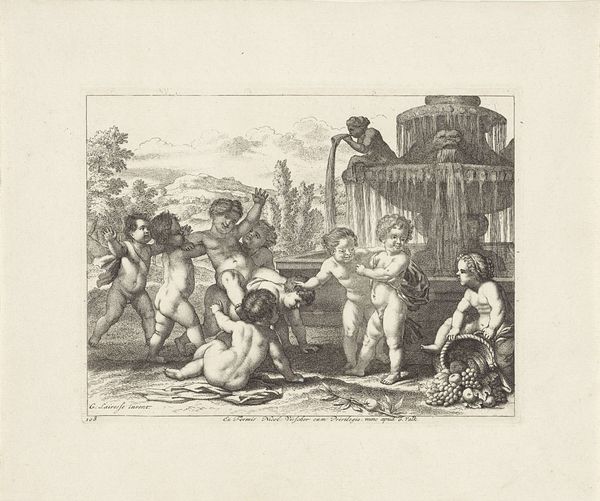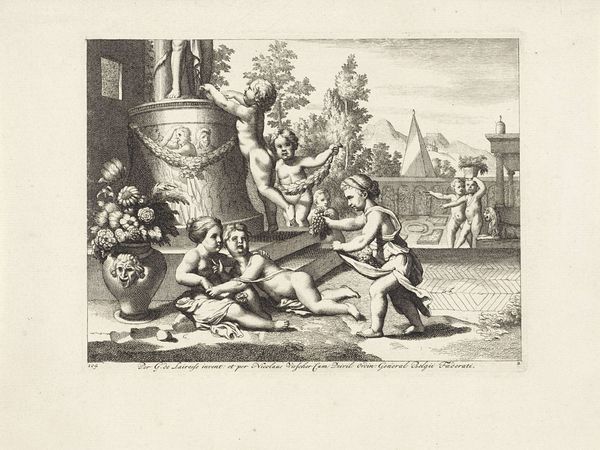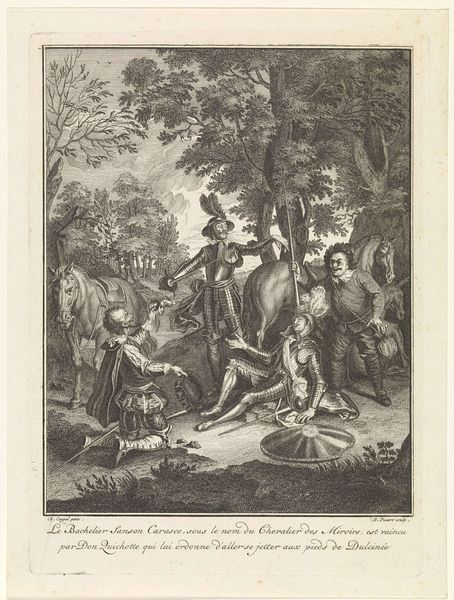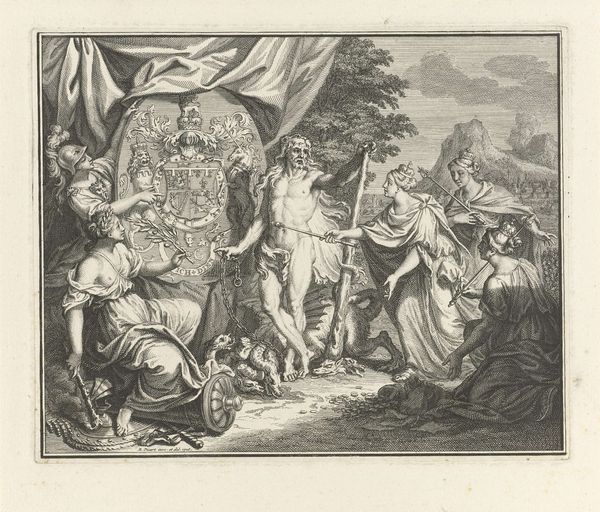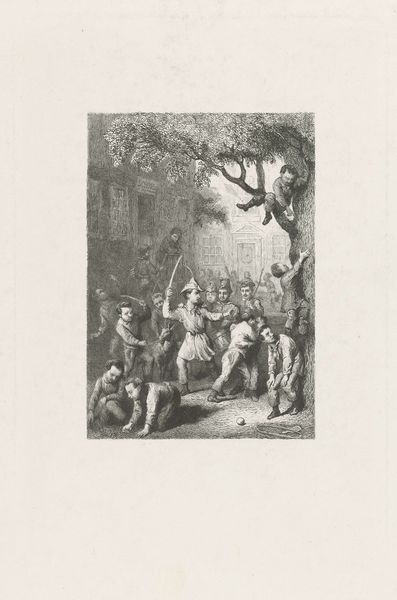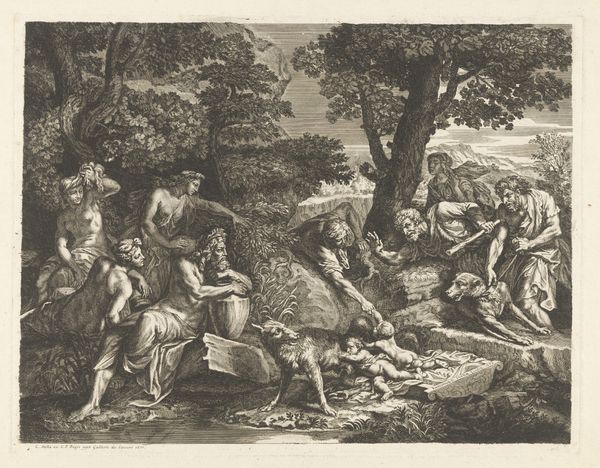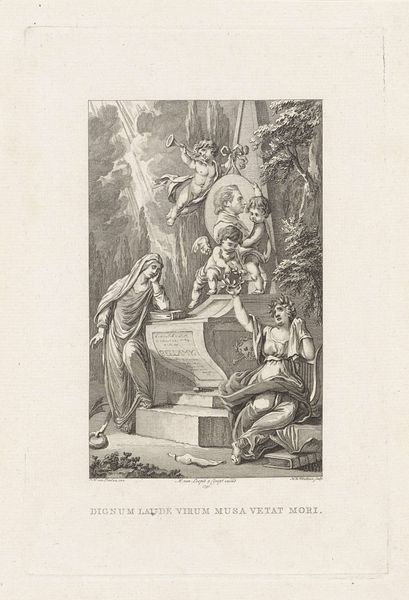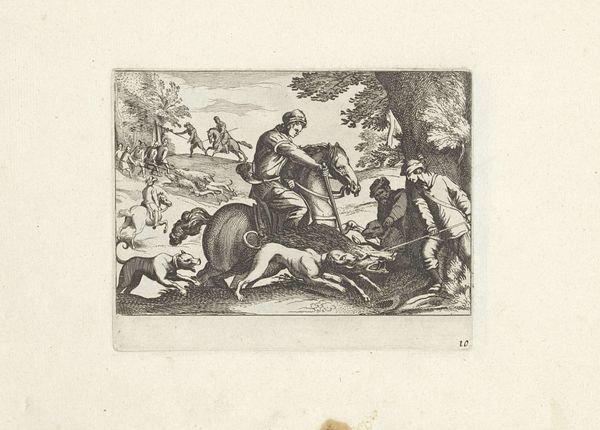
engraving
#
baroque
#
old engraving style
#
figuration
#
genre-painting
#
engraving
Dimensions: height 159 mm, width 211 mm
Copyright: Rijks Museum: Open Domain
Editor: We're looking at "Dancing and Music-Making Putti," an engraving from around 1670-1690 by an anonymous artist, housed at the Rijksmuseum. The scene is just teeming with playful energy. What strikes me most is the carefree abandon – they seem totally unburdened. How do you interpret this work, especially considering its historical context? Curator: It's easy to be charmed by the scene's exuberance, but consider the social function these images served in the Baroque period. These putti, while seemingly innocent, reflect a broader fascination with idealized childhood within the upper classes. Editor: Interesting! So, the "carefree abandon" is less about genuine innocence and more about… societal aspirations? Curator: Precisely. Engravings like this weren’t mass produced for the masses. Think of the patronage system. Who would have commissioned or purchased this, and what message were they trying to convey through it? Was it to celebrate wealth? Display an ideal family image? Consider how this print might function as a visual manifestation of power and status. Notice, for example, the sculpted urn and formal garden setting. Those are not random details. Editor: That makes a lot of sense. I was only looking at the surface-level playfulness, but I see now how the entire composition points to something much deeper. What do you think they are celebrating? Curator: Possibly a number of significant life events, or simply to celebrate life within a privileged household and their sophisticated culture. This could be a piece designed to communicate to other affluent families. Editor: So, it's a status symbol disguised as cherubic entertainment. I will definitely be looking closer at these images and thinking about their place in cultural history. Thank you! Curator: Indeed! It encourages us to see beyond the surface and question the narratives presented. It allows us to look more closely into power dynamics within the art of the period.
Comments
No comments
Be the first to comment and join the conversation on the ultimate creative platform.
